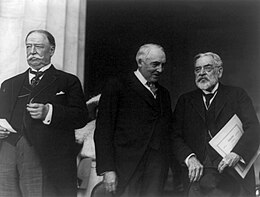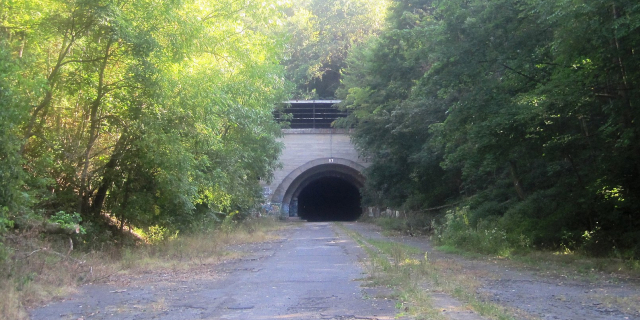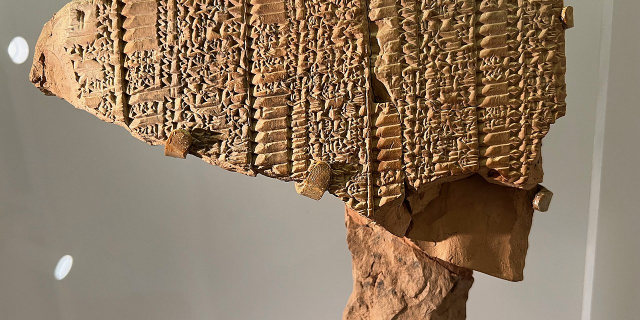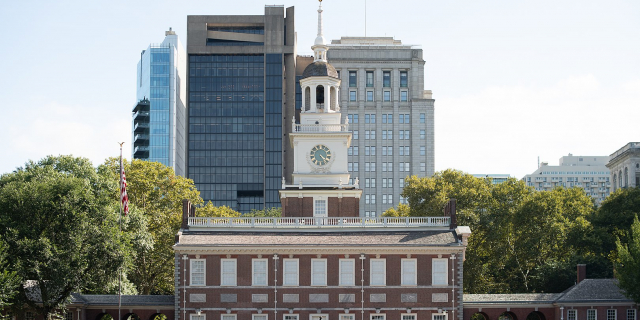The Lincoln Memorial is a U.S. national memorial that honors the 16th president of the United States, Abraham Lincoln. An example of neoclassicism, it is in the form of a classical temple and is located at the western end of the National Mall in Washington, D.C. Henry Bacon is the memorial's architect and Daniel Chester French designed the large interior statue of a seated Abraham Lincoln (1920), which was carved in marble by the Piccirilli brothers. Jules Guerin painted the interior murals, and the epitaph above the statue was written by Royal Cortissoz. Dedicated on May 30, 1922, it is one of several memorials built to honor an American president. It has been a major tourist attraction since its opening, and over the years, has occasionally been used as a symbolic center focused on race relations and civil rights.
Doric style columns line the temple exterior, and the inscrip...Read more
The Lincoln Memorial is a U.S. national memorial that honors the 16th president of the United States, Abraham Lincoln. An example of neoclassicism, it is in the form of a classical temple and is located at the western end of the National Mall in Washington, D.C. Henry Bacon is the memorial's architect and Daniel Chester French designed the large interior statue of a seated Abraham Lincoln (1920), which was carved in marble by the Piccirilli brothers. Jules Guerin painted the interior murals, and the epitaph above the statue was written by Royal Cortissoz. Dedicated on May 30, 1922, it is one of several memorials built to honor an American president. It has been a major tourist attraction since its opening, and over the years, has occasionally been used as a symbolic center focused on race relations and civil rights.
Doric style columns line the temple exterior, and the inscriptions inside include two well-known speeches by Lincoln, the Gettysburg Address and his second inaugural address. The memorial has been the site of many famous speeches, including Martin Luther King Jr.'s "I Have a Dream" speech delivered on August 28, 1963, during the rally at the end of the March on Washington for Jobs and Freedom.
Like other monuments on the National Mall – including the nearby Vietnam Veterans Memorial, Korean War Veterans Memorial, and World War II Memorial – the national memorial is administered by the National Park Service under its National Mall and Memorial Parks group. It has been listed on the National Register of Historic Places since October 15, 1966, and was ranked seventh on the American Institute of Architects' 2007 list of America's Favorite Architecture. The memorial is open to the public 24 hours a day, and more than seven million people visit it annually.
 Future site of the Memorial, c. 1912
Future site of the Memorial, c. 1912 Chief Justice William Howard Taft, President Harding, and Abraham Lincoln's son, Robert Todd Lincoln, at the dedication of the Lincoln Memorial, May 30, 1922
Chief Justice William Howard Taft, President Harding, and Abraham Lincoln's son, Robert Todd Lincoln, at the dedication of the Lincoln Memorial, May 30, 1922The first public memorial to United States President Abraham Lincoln in Washington, D.C., was a statue by Lot Flannery erected in front of the District of Columbia City Hall in 1868, three years after Lincoln's assassination.[1][2] Demands for a fitting national memorial had been voiced since the time of Lincoln's death. In 1867, Congress passed the first of many bills incorporating a commission to erect a monument for the sixteenth president. An American sculptor, Clark Mills, was chosen to design the monument. His plans reflected the nationalistic spirit of the time and called for a 70-foot (21 m) structure adorned with six equestrian and 31 pedestrian statues of colossal proportions, crowned by a 12-foot (3.7 m) statue of Abraham Lincoln. Subscriptions for the project were insufficient.[3]
The matter lay dormant until the start of the 20th century, when, under the leadership of Senator Shelby M. Cullom of Illinois, six separate bills were introduced in Congress for the incorporation of a new memorial commission. The first five bills, proposed in the years 1901, 1902, and 1908, met with defeat because of opposition from Speaker Joe Cannon. The sixth bill (Senate Bill 9449), introduced on December 13, 1910, passed. The Lincoln Memorial Commission had its first meeting the following year and United States President William H. Taft was chosen as the commission's president. Progress continued steadily, and by 1913 Congress had approved the commission's choice of design and location.[3]
There were questions regarding the commission's plan. Many thought architect Henry Bacon's Greek temple design was far too ostentatious for a man of Lincoln's humble character. Instead, they proposed a simple log cabin shrine. The site too did not go unopposed. The recently reclaimed land in West Potomac Park was seen by many as either too swampy or too inaccessible. Other sites, such as Union Station, were put forth. The Commission stood firm in its recommendation, feeling that the Potomac Park location, situated on the Washington Monument–Capitol axis, overlooking the Potomac River and surrounded by open land, was ideal. Furthermore, the Potomac Park site had already been designated in the McMillan Plan of 1901 to be the location of a future monument comparable to that of the Washington Monument.[3][4]
With Congressional approval and a $300,000 allocation, the project got underway. On February 12, 1914, contractor M. F. Comer of Toledo, Ohio; resident member of the memorial's commission, former Senator Joseph C. S. Blackburn of Kentucky; and the memorial's designer, Henry Bacon conducted a groundbreaking ceremony by turning over a few spadefuls of earth.[5] The following month is when actual construction began. Work progressed steadily according to schedule. Some changes were made to the plan. The statue of Lincoln, originally designed to be 10 feet (3.0 m) tall, was enlarged to 19 feet (5.8 m) to prevent it from being overwhelmed by the huge chamber. As late as 1920, the decision was made to substitute an open portal for the bronze and glass grille which was to have guarded the entrance. Despite these changes, the Memorial was finished on schedule. Commission president William H. Taft – who was then Chief Justice of the United States – dedicated the Memorial on May 30, 1922, and presented it to United States President Warren G. Harding, who accepted it on behalf of the American people. Lincoln's only surviving son, 78-year-old Robert Todd Lincoln, was in attendance.[6] Prominent African Americans were invited to the event and discovered upon arrival they were assigned a segregated section guarded by U.S. Marines.[7]
The Memorial was listed on the National Register of Historic Places on October 15, 1966.[8]

































Add new comment